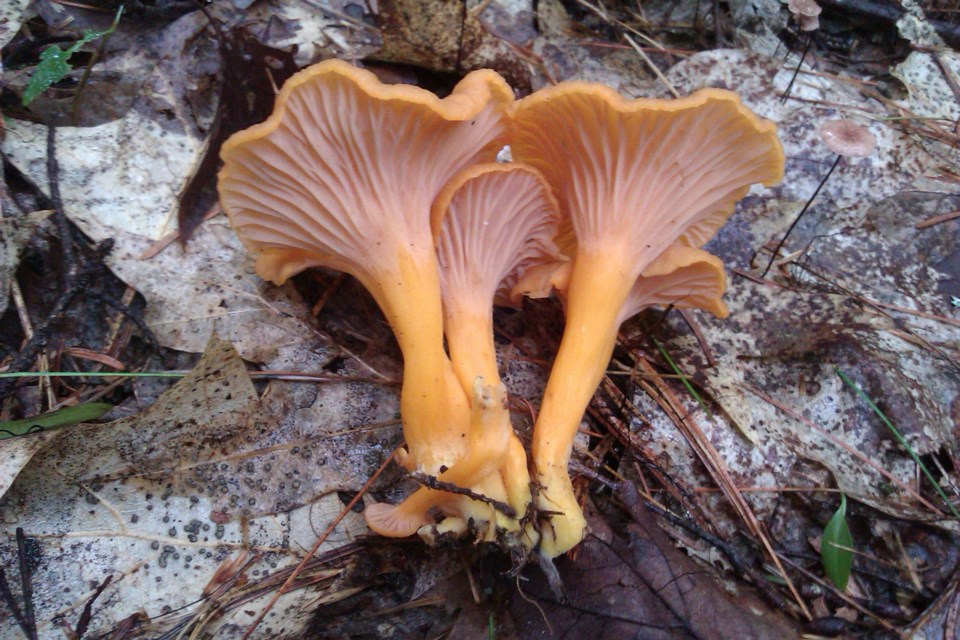If you walk in the woods in autumn, or even if you walk along the sidewalks in the city you will notice mushrooms sprouting up everywhere. Why do they do this?
Mushrooms are like apples – they are simply the reproductive part of an organism that lives mostly out of sight almost all the time. Underground, or under the bark or trees, the true organism of mushroom production silently works to decompose organic matter.
Without this mycelium network, nothing would rot. Forests could not exist.
When the rains come along with the cooler weather of autumn, the mycelium of thousands of varieties of fungi suddenly produce mushrooms. Tens of thousands of varieties of fruiting bodies show up – from just a few millimeters in size to 20 or 30 centimetres across.
When I walk in the woods these days, I’m usually looking for just a few of these multitudes of mushrooms. Specifically, I’m searching for Honey Mushrooms, Matsutake, and Chanterelles. These grow in quantity, and are some of the most delicious in our forest.
I’ve been waiting and watching for them for weeks now. And suddenly, the Honeys are here. Can the others be far behind?
As I walk through the forest I ask, “What do mushrooms want? What conditions inspire them to bloom?” And, “they were abundant here last year but not the year before … will they be back this year?”
Honey mushrooms always grow on wood. They nearly always are gregarious, which means they are in large overlapping groups. They tend to wait until a week or so after the first frost… assuming there has been enough rain.
Once they get started, there is no stopping them. Which makes me look forward to cooling days and nights, because there’s not much use picking honey mushrooms on a warm day. The beetles get there first, and their offspring love them as much as I do.
Matsutakes love pines, especially jack pine. And they require a special type of subsoil called podzol which looks like a grey ashy clay under the duff.
Matsutakes also come after the rains of autumn … but not yet. They are late this year. What are they waiting for?
The tiny Chanterelles of autumn like the oak forest floor. Sometimes they are hard to see because the falling leaves of nearby birch and poplar are the same colour. They are only a few cm tall, but once they come up I can get a basketful in just 10 minutes.
Wild mushrooms are so fascinating, so beautiful and somewhat mysterious. Searching for them is like a treasure hunt.
And when the desired species is found, the joy is addictive. The three types mentioned here often produce far more mushrooms than I can ever eat.
If you would like to try some, send me an email ([email protected]). I’m usually in Sudbury on Tuesdays, and will have both fresh and dried mushrooms for sale.
Viki Mather has been commenting for Northern Life on the natural world and life in Greater Sudbury since the spring of 1984. Got a question or idea for Viki? Send an email to [email protected].
